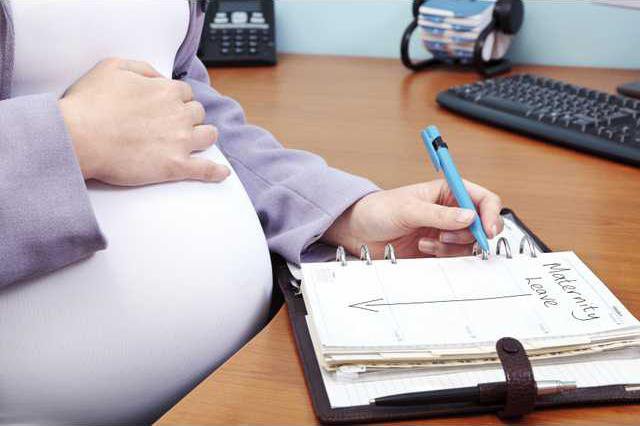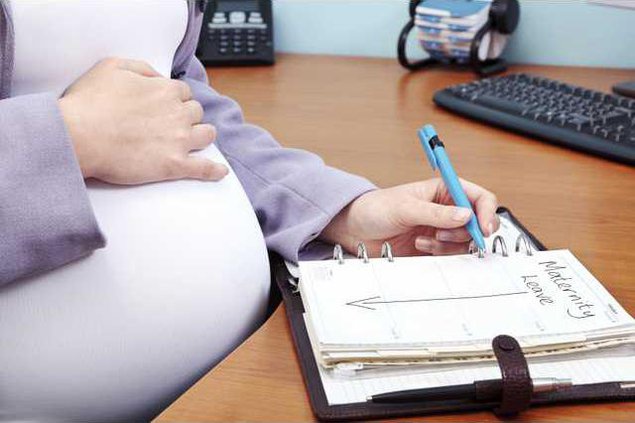Family-friendly policies are meant to help parents balance jobs and family, and help women, in particular, help support their families by staying in the work force.
But sometimes these policies backfire, according to a report from the New York Times. They can encourage discrimination against women when companies fear that they will leave for long periods of time and cost the company money by using expensive benefits.
For employers, it becomes much easier to justify discrimination, Sarah Jane Glynn, director of womens economic policy at the Center for American Progress, told the New York Times.
The United States has few federal policies for working parents compared to other developed countries, and it's the only developed country that doesn't offer paid family leave, according to a UN report. Just 11 percent of workplaces in the United States provide paid leave for employees, according to Department of Labor statistics, and the Family Medical Leave Act doesn't guarantee time off but allows eligible employees to take time off for 12 weeks when a child is born or adopted and maintain group health insurance. But it doesn't require employers to pay for that time.
In 1990, America ranked sixth among 22 developed countries for female workforce participation, but by 2010 it ranked 17th. A Cornell study attributes this to generous family leave policies in other countries like Canada, for example, that offers 17 weeks of paid maternity leave plus an additional 35 weeks that a mother or father can take. Canada's workforce participation rate for working-age women is 82 percent, while it's just 74 percent for the U.S.
That's not just good for families, economists argue, but good for the economy by utilizing more of the educated workforce. "If you want to grow (the economy), you can't leave talent on the sidelines," U.S. Labor Secretary Tom Perez told CNNMoney. "It's an issue of economic self-interest and economic growth."
But family leave policies don't always work that way, according to a new study from Spain, where a law was passed in 1999 that gives workers with children under age 7 reduced hours without being laid off and those who used the benefit were nearly all women.
For the next decade, companies were 6 percent less likely to hire women of childbearing age and 37 percent less likely to promote them. Women of childbearing age were 45 percent more likely to get fired, according to the study by economists at IE Business School in Madrid.
Likewise, a new child care policy in Chile to get women back to work required companies of a certain size to provide free child care, but companies simply responded by cutting women's salaries by 9 to 20 percent.
This backs up findings from Cornell that studied 22 countries, and found that those with generous maternity leave policies made it more likely for women to work, but also more likely to be in dead-end work and have unstable contract jobs and less likely to be in management.
Experts say the best way to make family leave work better is to emphasize paternity leave, not maternity leave, which makes the issue gender neutral for employers. In Sweden, for example, 90 percent of dads take paternity leave for an average of seven weeks. This allows moms to go back to work more easily and allows dads to be more involved with their families, according to an Economist report which said that women's incomes and self-reported happiness have increased.
The trick is to make family leave an issue for men, not just women, Glynn from the Center for American Progress told the Times.
It has to become something that humans do, she said, as opposed to something that women do.
But sometimes these policies backfire, according to a report from the New York Times. They can encourage discrimination against women when companies fear that they will leave for long periods of time and cost the company money by using expensive benefits.
For employers, it becomes much easier to justify discrimination, Sarah Jane Glynn, director of womens economic policy at the Center for American Progress, told the New York Times.
The United States has few federal policies for working parents compared to other developed countries, and it's the only developed country that doesn't offer paid family leave, according to a UN report. Just 11 percent of workplaces in the United States provide paid leave for employees, according to Department of Labor statistics, and the Family Medical Leave Act doesn't guarantee time off but allows eligible employees to take time off for 12 weeks when a child is born or adopted and maintain group health insurance. But it doesn't require employers to pay for that time.
In 1990, America ranked sixth among 22 developed countries for female workforce participation, but by 2010 it ranked 17th. A Cornell study attributes this to generous family leave policies in other countries like Canada, for example, that offers 17 weeks of paid maternity leave plus an additional 35 weeks that a mother or father can take. Canada's workforce participation rate for working-age women is 82 percent, while it's just 74 percent for the U.S.
That's not just good for families, economists argue, but good for the economy by utilizing more of the educated workforce. "If you want to grow (the economy), you can't leave talent on the sidelines," U.S. Labor Secretary Tom Perez told CNNMoney. "It's an issue of economic self-interest and economic growth."
But family leave policies don't always work that way, according to a new study from Spain, where a law was passed in 1999 that gives workers with children under age 7 reduced hours without being laid off and those who used the benefit were nearly all women.
For the next decade, companies were 6 percent less likely to hire women of childbearing age and 37 percent less likely to promote them. Women of childbearing age were 45 percent more likely to get fired, according to the study by economists at IE Business School in Madrid.
Likewise, a new child care policy in Chile to get women back to work required companies of a certain size to provide free child care, but companies simply responded by cutting women's salaries by 9 to 20 percent.
This backs up findings from Cornell that studied 22 countries, and found that those with generous maternity leave policies made it more likely for women to work, but also more likely to be in dead-end work and have unstable contract jobs and less likely to be in management.
Experts say the best way to make family leave work better is to emphasize paternity leave, not maternity leave, which makes the issue gender neutral for employers. In Sweden, for example, 90 percent of dads take paternity leave for an average of seven weeks. This allows moms to go back to work more easily and allows dads to be more involved with their families, according to an Economist report which said that women's incomes and self-reported happiness have increased.
The trick is to make family leave an issue for men, not just women, Glynn from the Center for American Progress told the Times.
It has to become something that humans do, she said, as opposed to something that women do.

